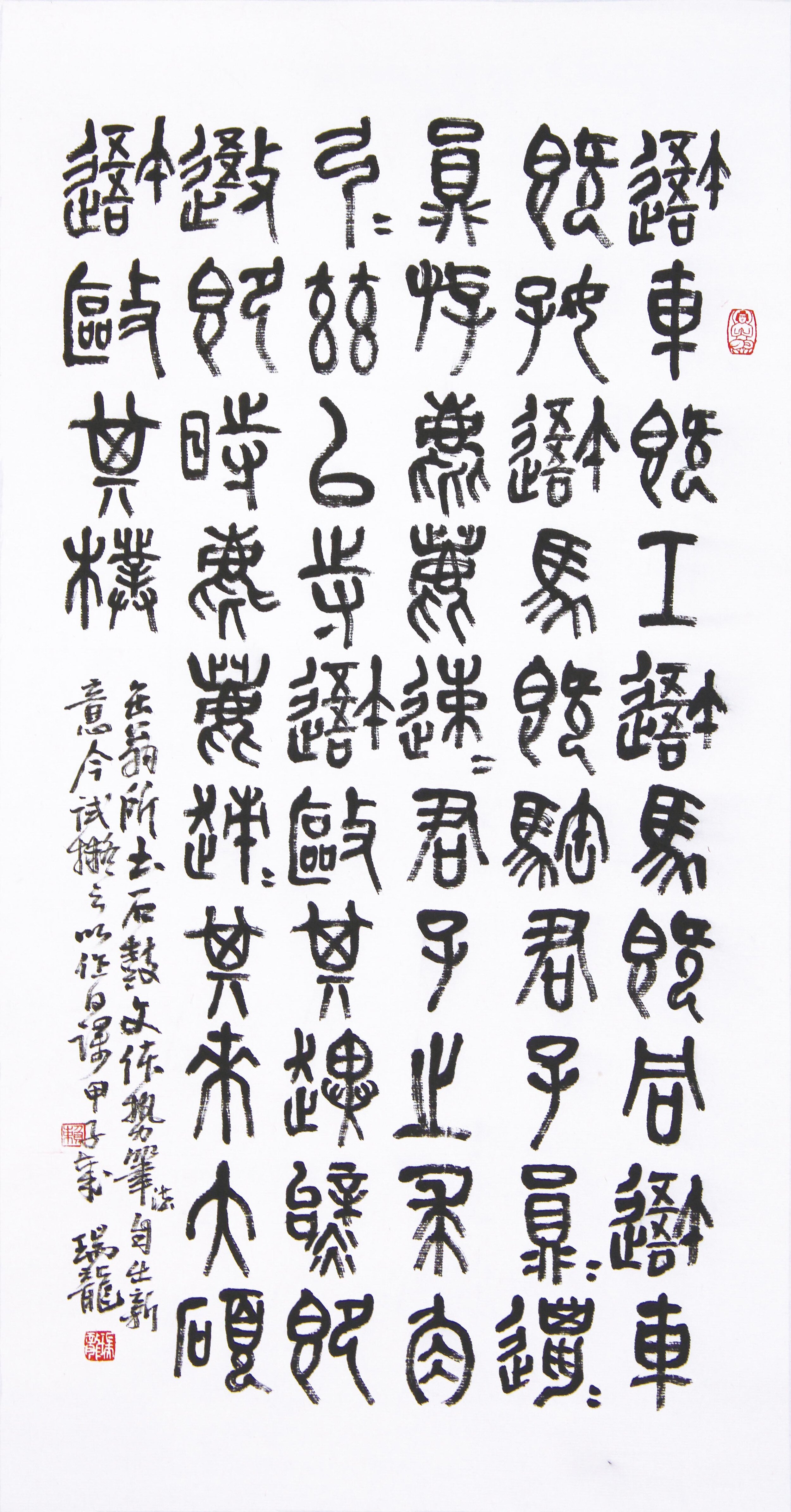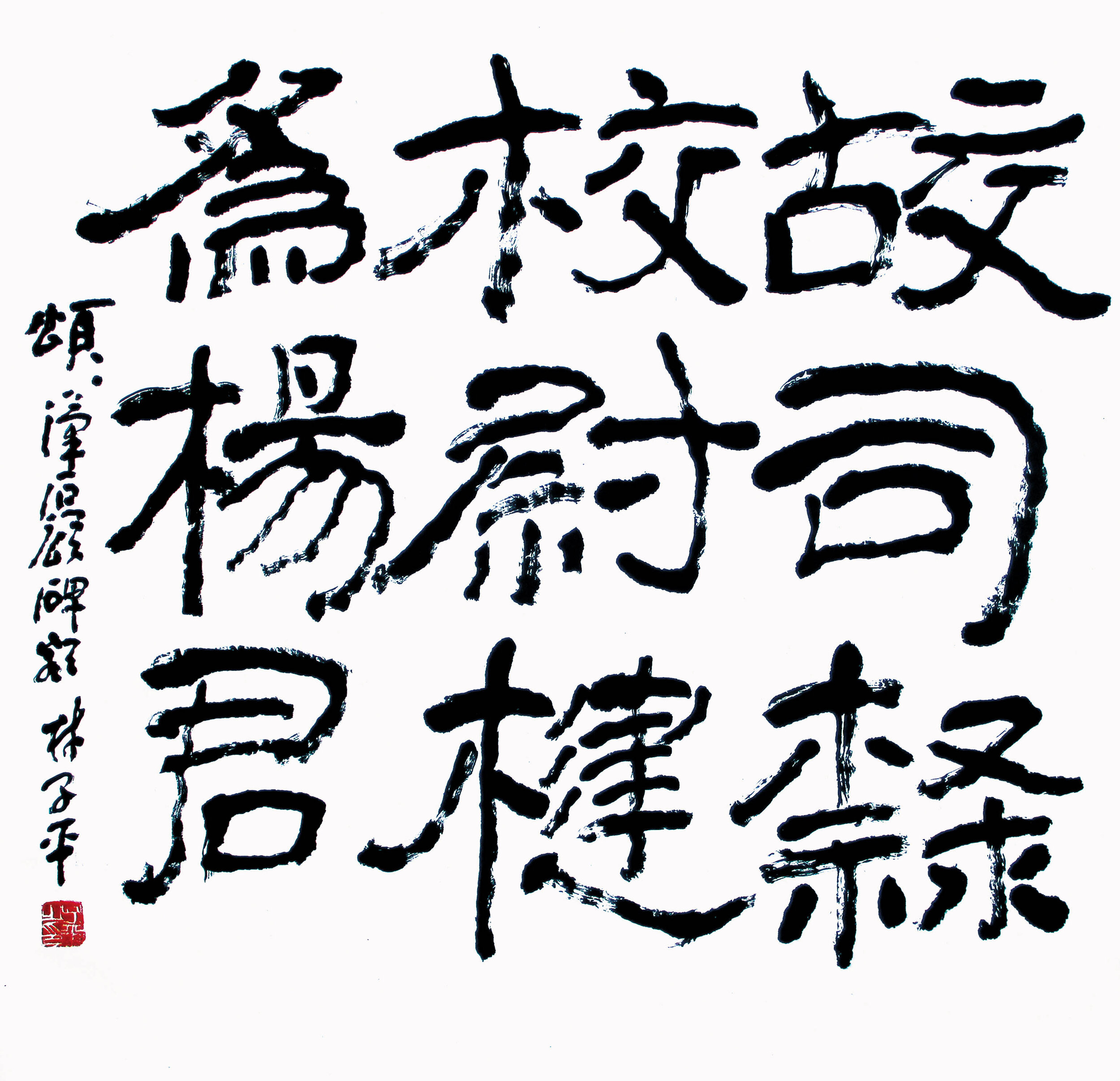Chinese calligraphy writing has been widely studied, appreciated and developed since the times our great grandfathers. More recently, calligraphy writing has become the foundation and source of inspiration for various interpretations by artists.
Here are 5 simple facts for you to feel better equipped when standing in-front of a work of calligraphy writing
Ancient art form
The art of Chinese calligraphy has been in existence since the Shang Dynasty in ancient china. Being at least 4000-5000 years old, it was first evident as inscriptions on animal oracles such as tortoise shells and animal bones. These markings referred to matters such as the founding of settlements, warfare, hunting expeditions, weather forecasts etc.
Image: Chinese Calligraphy The Art of Handwritting by Chen Tingyou translated by Ren Lingjuan
Published by China Intercontnental Press
2. Cultural/Artistic standing
Chinese calligraphy has been a highly regarded form of visual art, at times overweighing paintings and sculptures in ancient China. Being of the same artistic value as poetry, calligraphy writing is an outlet of free expression through Chinese culture.
Left: Calligraphy writing by Singaporean calligrapher Sim Kwang Hun
Right: Collection of poems published by the General Society for Chinese Classical Poetry
3. Tools of a calligrapher
Basic materials which includes absorbent ‘rice’ paper, brush and ink pigment are used by calligraphers today.
‘Xuan’ paper now commonly used by calligraphers, was named during the Tang dynasty after its native region. It is made up of various plant fibres, delicate and thin, however, its resistance to deterioration and aging is evident. If preserved well, it can last hundreds of years.
The brush usually have softer bristles made up of animal hair. These animals included deer, goat, weasels or foxes. A combination of different kinds of animal hairs were used ti create blends of harder and softer bristles. In the olden days, it is said that brushes were made with a newborn’s fallen hair. That occurs even till today but people do not use the brush but instead keep it as a souvenir, wishing that they become cultivated individuals when they grow up.
The ink pigment was produced by rubbling a rectangular or round ink stick on an ink stone with little water. The stick was made of a combination of coal and oil together with other materials. Good quality ink pigments are fadeless and does not coagulate in lumps during writing.With different amounts of water mixed to the ink, they can take on different hues.
In modern times, people are more open to using ink from bottles due to the convenience and easy use.
Tools of Singaporean artist Mr Lim Tze Peng
4. "Calligraphy is like music without sound."
Some may be confused as to how we can identify a good calligraphy piece. Calligraphic works fall into two kinds: rigid and flexible.
Rigid calligraphic writings are vigorous, powerful and magnificent. Flexible works are delicate, elegant and graceful. By observing each Chinese character written, one could feel a certain rhythm, presence of an aesthetic and even characteristics of the calligrapher.
In ancient China, a child’s beautiful handwriting and calligraphy skills were cultivated as a reflection of their good personality and character.
5. Fonts and scripts
There are 5 different scripts in traditional calligraphy Writing
Seal Script 篆书
Clerical Script 隶书
Semi-cursive Script 草书
Cursive Script 行书
Regular Script 楷书
The following examples of calligraphy writings by Singaporean artists are related to the Seal, Clerical and Regular Scripts.
Seal script
This form of writing evolved from incisions and characters found on materials such as oracle bones or other surfaces of jade. Today, this form of writing is commonly utilised in seals (name chops) which act as an alternative form of signing by calligraphers and artists.
Clerical script
This form of writing appeared in the later periods of the Han dynasty and was known to be commonly used by government officials. These characters are often "flat" and wider than those in seal script and regular script. Its distinctive features are at times equated to 'silkworm heads’ and ‘wild goose tails'.
Regular Script
This form of writing is perhaps the most widely recognised style. Each brushstroke is clearly articulated and relatively distinct from one another.






